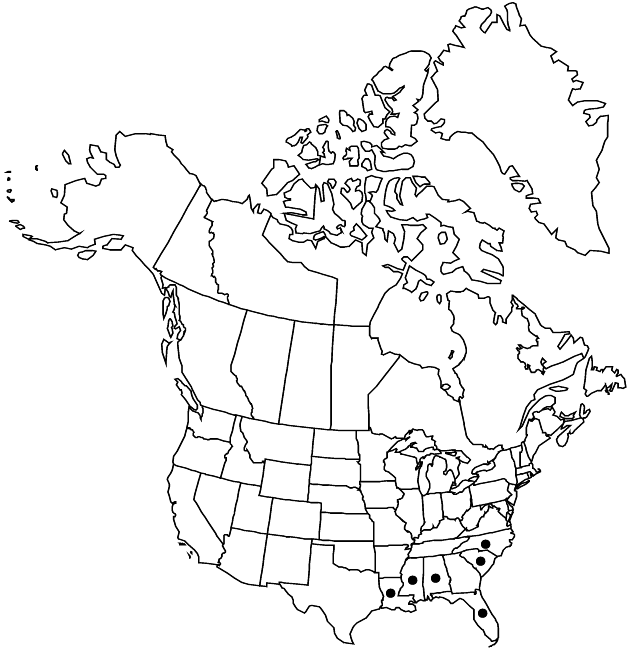Cirsium lecontei
Fl. N. Amer. 2: 458. 1843.
Perennials but sometimes appearing biennial, 35–110 cm; taproots, sometimes with root sprouts. Stems 1–few, erect, distal 1/2 nearly naked, loosely arachnoid; branches 0–5 (–10), stiffly ascending. Leaves: blades linear to oblong or narrowly elliptic, 15–25 × 1–4 cm, coarsely toothed to shallowly pinnatifid, lobes undivided or coarsely few-toothed, main spines 3–6 mm, abaxial faces often ± glabrate, loosely arachnoid when young, adaxial glabrous or sparingly villous with coarse, multicellular trichomes; basal sometimes absent at flowering, petiolate; principal cauline sessile, progressively reduced distally, bases clasping or ± decurrent; distal cauline few, widely separated, bractlike. Heads borne singly or less commonly 2–5 (–10) in open, corymbiform arrays. Peduncles 5–30 cm (elevated above cauline leaves, not subtended by ring of involucrelike bracts). Involucres broadly cylindric to campanulate, 2.5–4 × 1.5–4 cm, loosely arachnoid, ± glabrate. Phyllaries in 6–10 series, imbricate, ovate or lanceolate (outer) to linear-lanceolate (inner), abaxial faces with prominent glutinous ridge, outer and middle tightly appressed, margins spinulose-serrulate, spines ascending, 0.5–2 mm; apices of inner flat, linear acuminate. Corollas pink-purple, 22–45 mm, tubes 10–23 mm, throats 8–14 mm, lobes 7–10 mm; style tips 4–5 mm. Cypselae light-brown, 5–5.75 mm, apical collars paler than body, ca. 0.75 mm; pappi 20–40 mm. 2n = 28, 32.
Phenology: Flowering spring–summer (May–Aug).
Habitat: Sandy pinelands of coastal plain, often in damp soil
Elevation: 0–150 m
Distribution

Ala., Fla., La., Miss., N.C., S.C.
Discussion
Of conservation concern.
Cirsium lecontei occurs on the southern coastal plain. R. J. Moore and C. Frankton (1969) suggested that it originated as a derivative of ancient hybridization between the ancestors of C. horridulum and C. nuttallii. They further suggested a relationship between C. lecontei and C. grahamii of Arizona and hypothesized an ancient dispersal from the southeastern coastal plain to the western cordillera. Although such relationships are possible, I have seen little support for them in my examination of these taxa. I think it is more likely that C. lecontei, C. horridulum, and C. nuttallii originated from a common stock, and that the resemblances between C. lecontei and C. grahamii are a result of convergence.
Selected References
None.
Lower Taxa
"fine" is not a number.